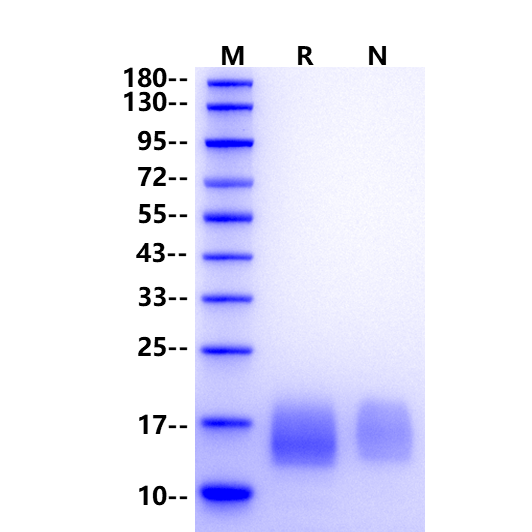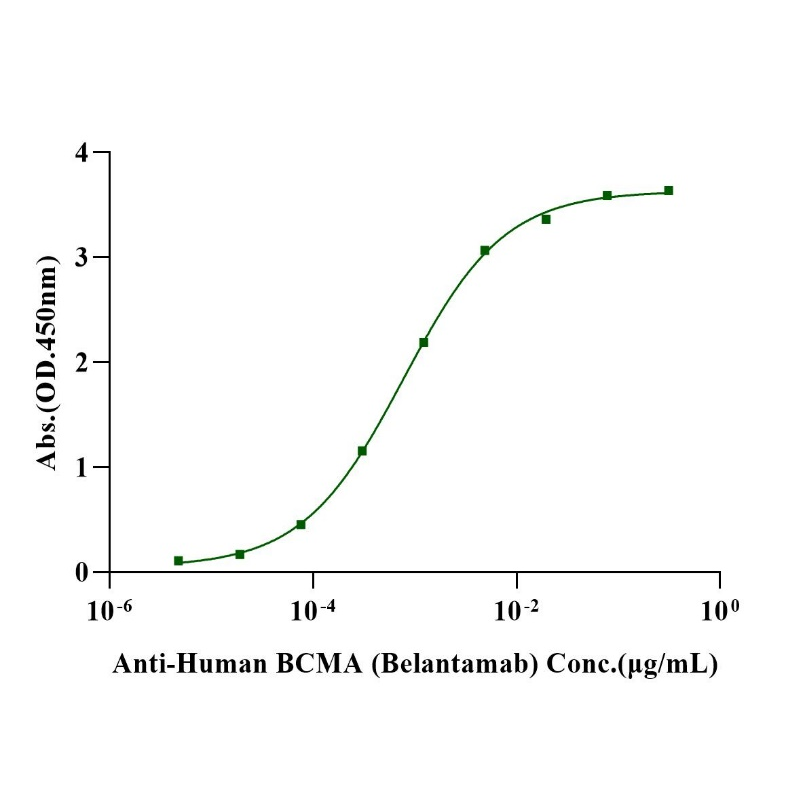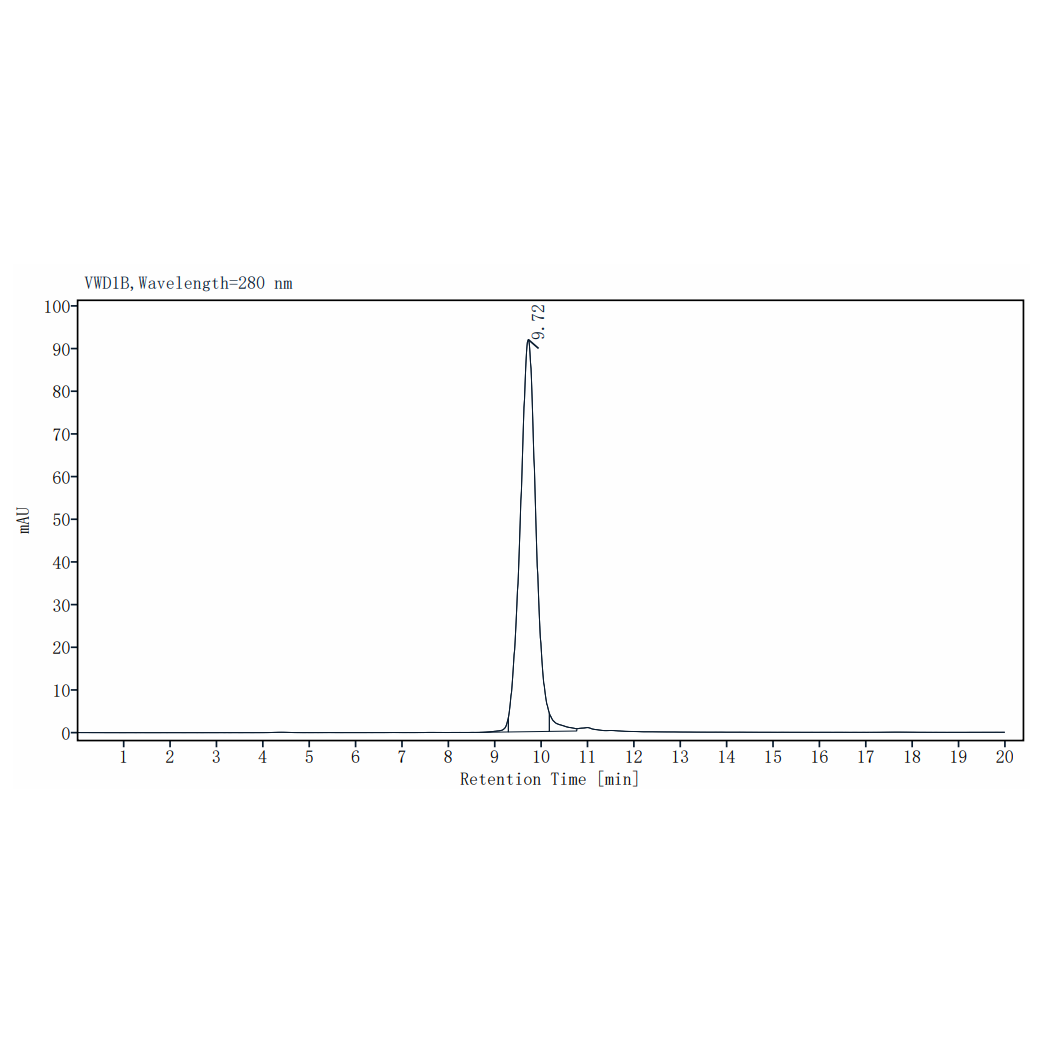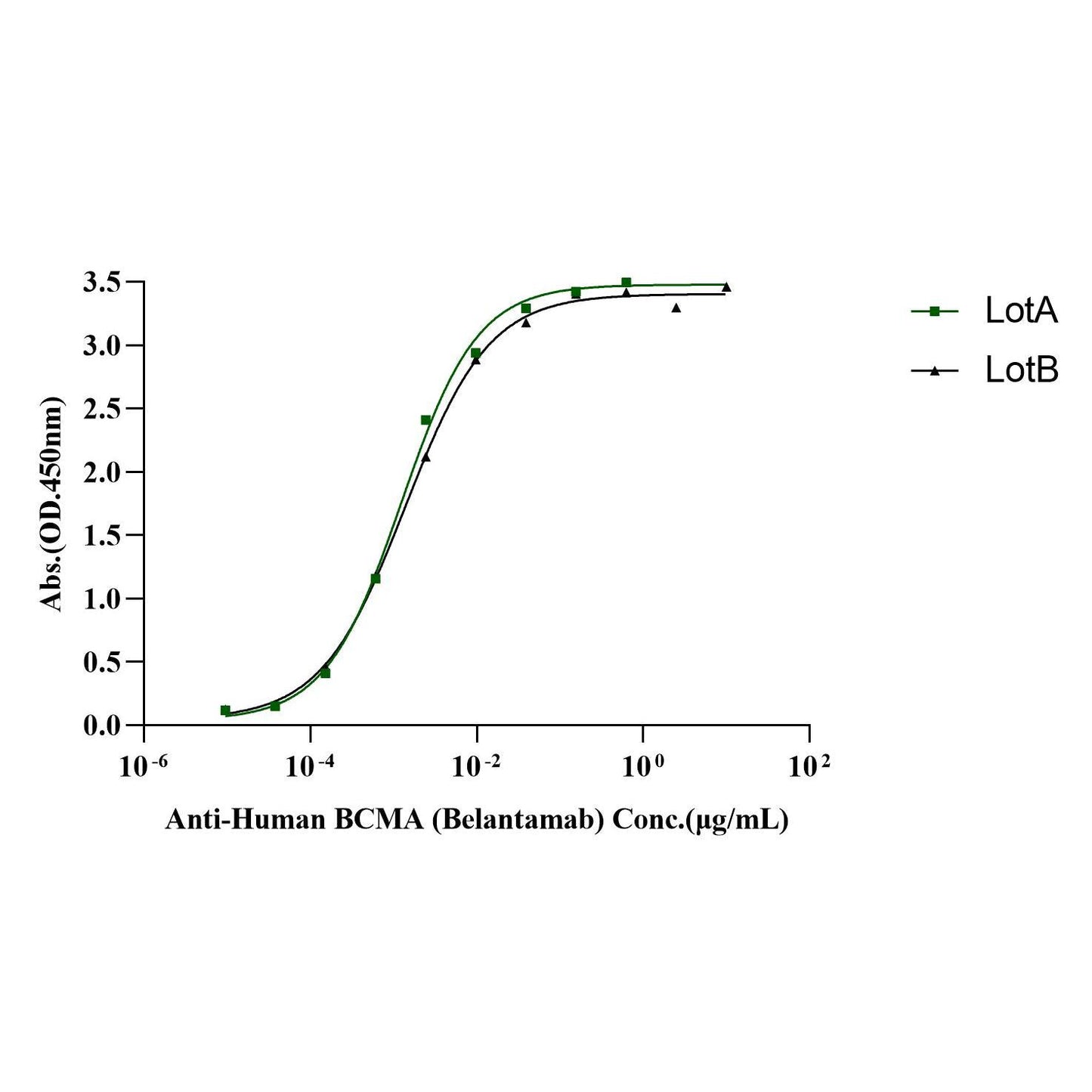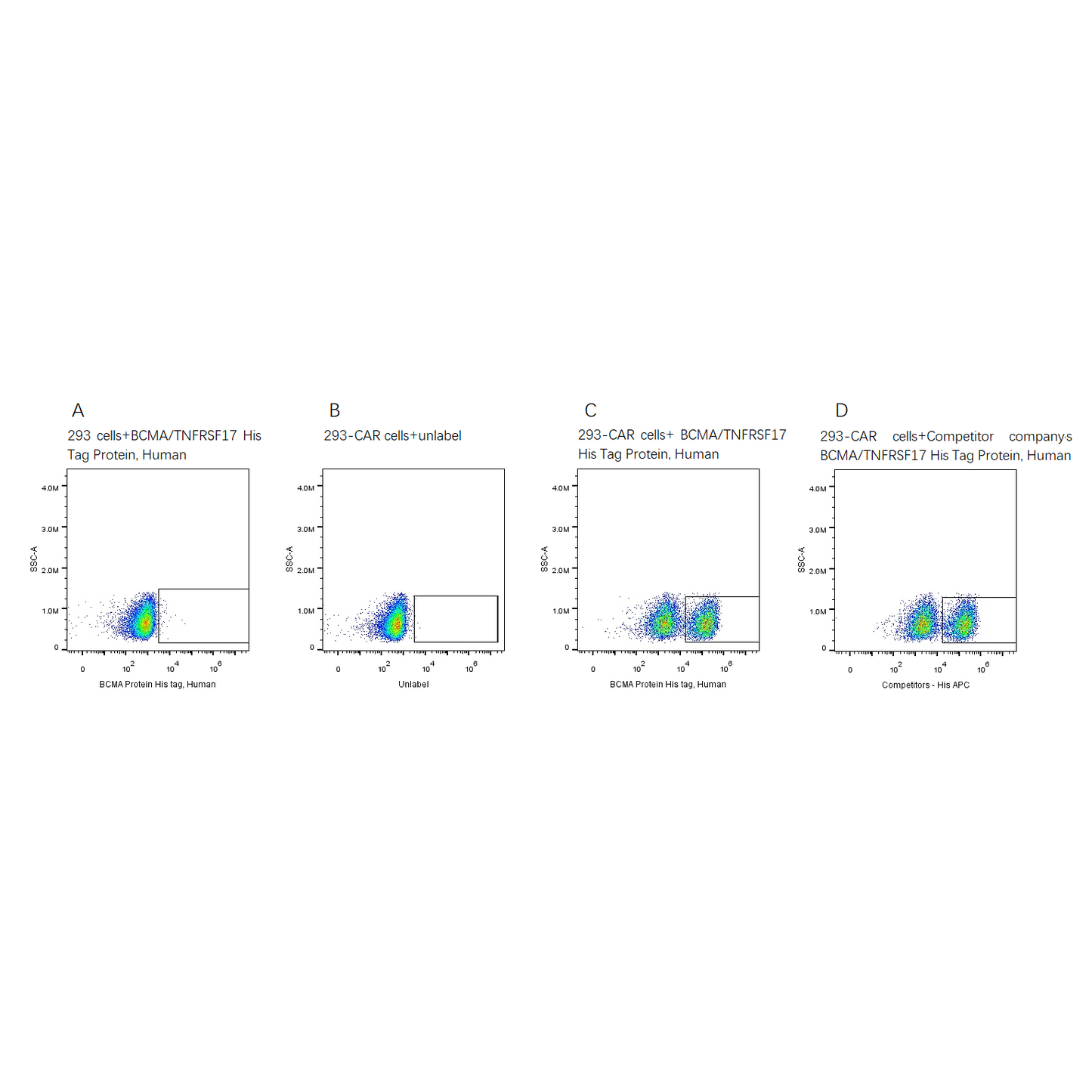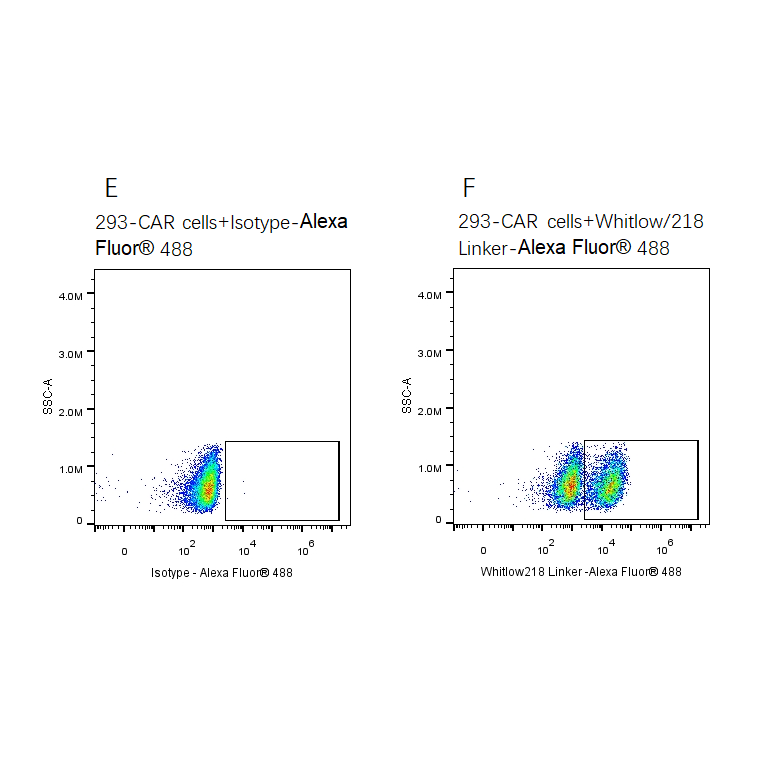2e5 of transient transfected anti-BCMA ScFv CAR-293 cells were stained with 0.1ug BCMA His Tag Protein, Human, (Cat. No. UA010083) and unlable respectively (Fig. C and B), and non-transfected 293 cells were used as a control (Fig. A). Alexa Fluor 647 signal was used to evaluate the binding activity. 2e5 of transient transfected anti- BCMA ScFv CAR-293 cells were stained with competitor respectively (Fig.D). APC signal was used to evaluate the binding activity.
2e5 of transient transfected anti- BCMA ScFv CAR-293 cells were stained with isotype and Whitlow/218 Linker-Alexa Fluor® 488 (Fig. E and F). Alexa Fluor® 488 signal was used to evaluate the binding activity.
Product Details
Product Details
Product Specification
| Species | Human |
| Antigen | BCMA/TNFRSF17 |
| Accession | Q02223-1 |
| Amino Acid Sequence | Met1-Ala54, with C-terminal 8*His MLQMAGQCSQNEYFDSLLHACIPCQLRCSSNTPPLTCQRYCNASVTNSVKGTNAGGGSHHHHHHHH |
| Expression System | HEK293 |
| Molecular Weight | 15-19kDa (Reducing) |
| Purity | >95% by SDS-PAGE |
| Endotoxin | <0.1EU/μg |
| Conjugation | Unconjugated |
| Tag | His Tag |
| Physical Appearance | Lyophilized Powder |
| Storage Buffer | PBS, pH7.4 |
| Reconstitution | Reconstitute at 0.1-1 mg/ml according to the size in ultrapure water after rapid centrifugation. |
| Stability & Storage |
· 12 months from date of receipt, lyophilized powder stored at -20 to -80℃. · 3 months, -20 to -80℃ under sterile conditions after reconstitution. · 1 week, 2 to 8℃ under sterile conditions after reconstitution. · Please avoid repeated freeze-thaw cycles. |
Background
BCMA (The B-cell maturation antigen), also designated as TNFRSF17, belongs to the tumor necrosis factor receptor superfamily, which is a family of cytokine receptors. BCMA is encoded by a 2.92-kb TNFRSF17 gene located on the short arm of chromosome 16 (16p13.13) and composed of 3 exons separated by 2 introns. There are four natural splice variants of human BCMA that present with different receptor binding affinities, membrane-anchoring ability, and intracellular domain signaling. BCMA main ligands are the cytokines B-cell activating factor and a proliferation-inducing ligand. The interaction between BCMA and its ligands activates the NF-κB signaling pathway that plays an important role in B-cell proliferation and maturation and is essential for the survival of long-lived bone marrow plasma cells. BCMA is expressed preferentially on mature B cells and has minimal expression on hematopoietic stem cells or other cell types. The BCMA has emerged as a central target in multiple myeloma (MM). In preclinical studies, overexpression of BCMA and the interaction with is ligand, a proliferation-inducing ligand (APRIL), was found to promote MM progression in vivo and augment MM cell growth and survival through induction of multiple signaling cascades, including protein kinase B (AKT), MAPK, and nuclear factor (NF)-κB. Additionally, BCMA has been shown to be solubilized at high levels in serum of patients with MM (sBCMA). This form of sBCMA binds to B-cell activating factor (BAFF). The role of BAFF is to stimulate normal B-cell and plasma cell development; however, this functioning is prevented when it is bound by BCMA in the serum, thereby leading to decreased polyclonal immunoglobulin levels in patients with MM.
Picture
Picture
FC

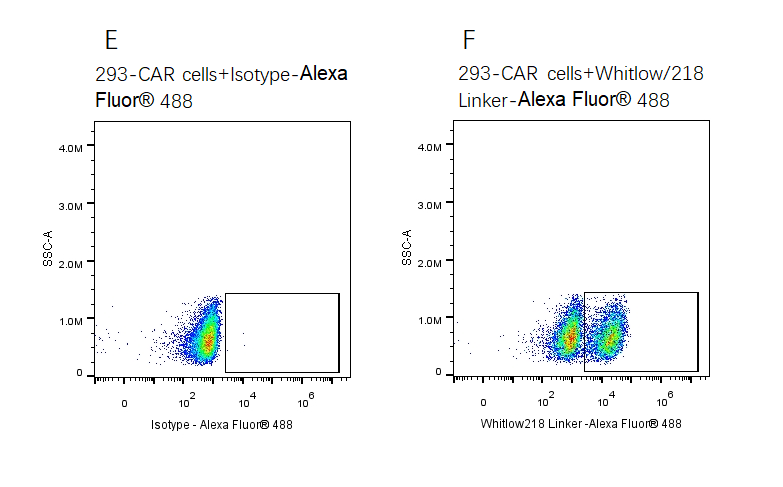
SDS-PAGE
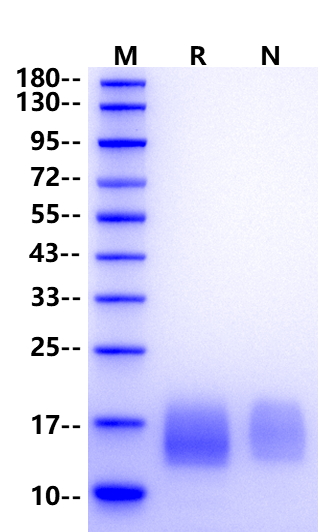
SEC-HPLC
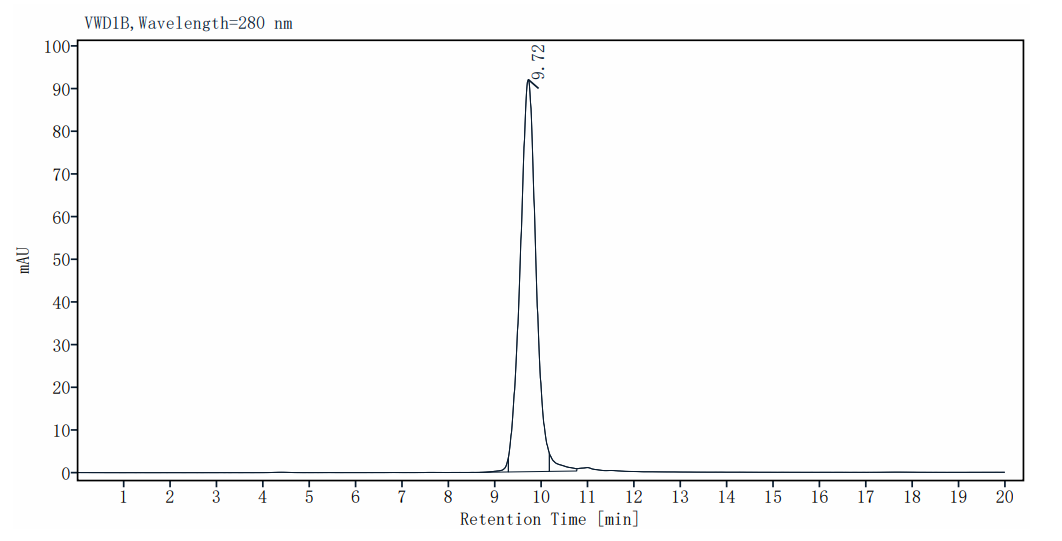
The purity of BCMA/TNFRSF17 His Tag Protein, Human is greater than 95% as determined by SEC-HPLC.
ELISA
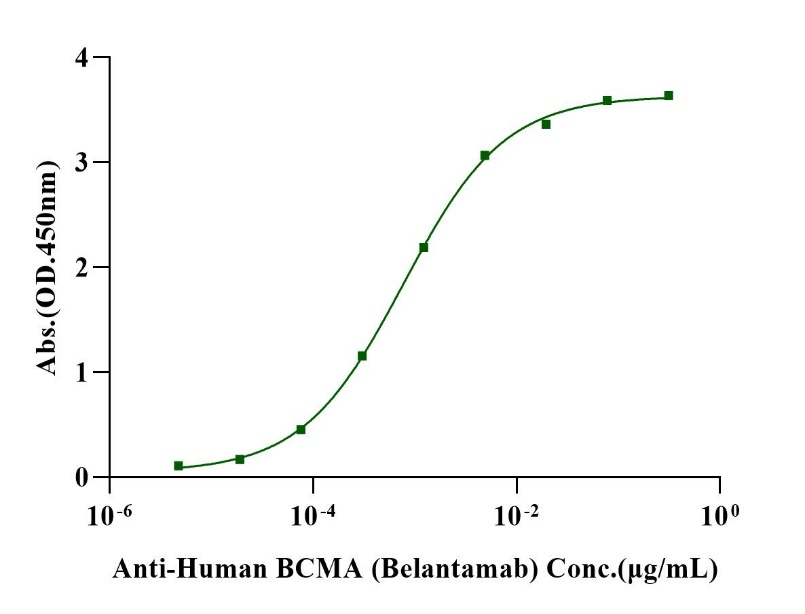
Immobilized BCMA/TNFRSF17 His Tag Protein, Human (Cat. No. UA010083) at 2.0μg/mL (100μL/well) can bind Anti-Human BCMA (Belantamab) with EC50 of 0.68-0.88ng/mL.
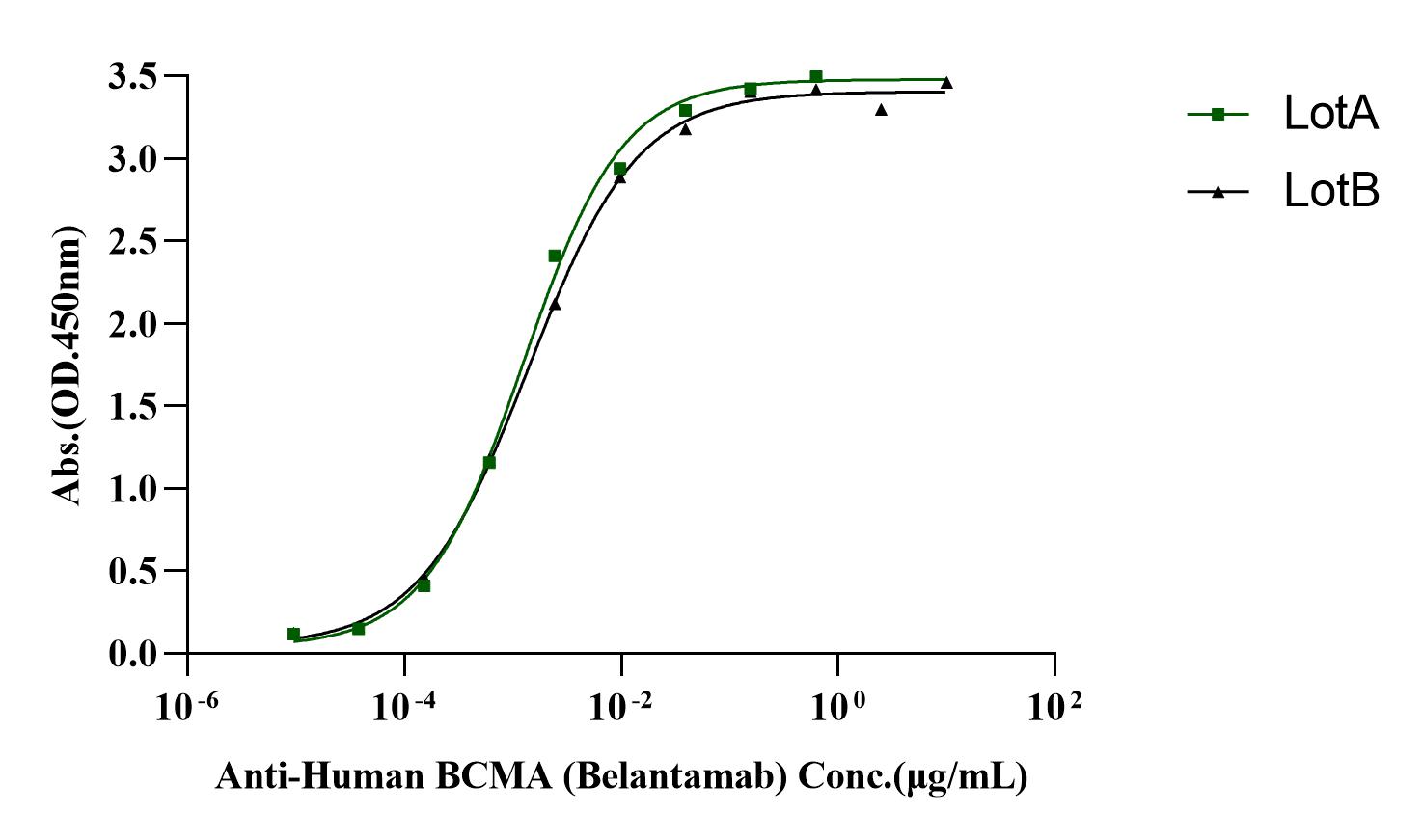
Immobilized BCMA/TNFRSF17 His Tag Protein, Human (Cat. No. UA010083) at 2.0μg/mL (100μL/well) can bind Anti-Human BCMA (Belantamab), LotA with EC50 of 1.00-1.55ng/mL. LotB with EC50 of 1.15-1.66ng/mL.
